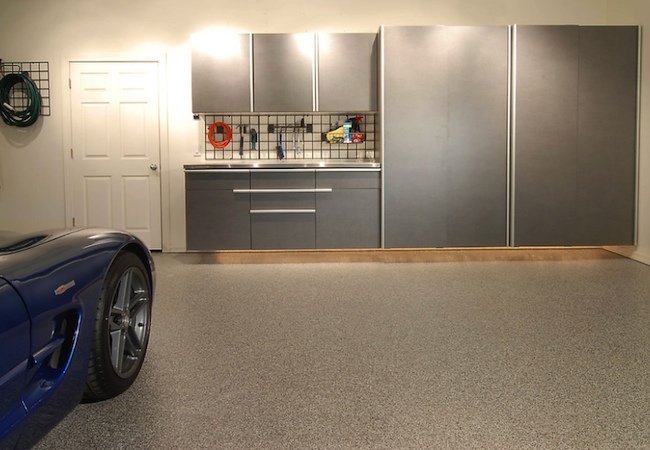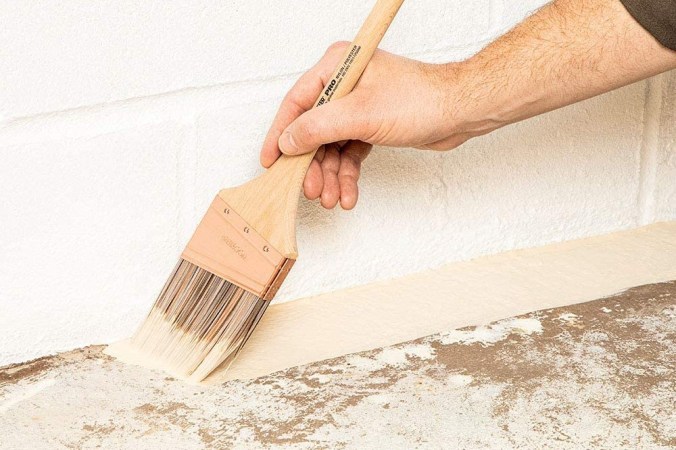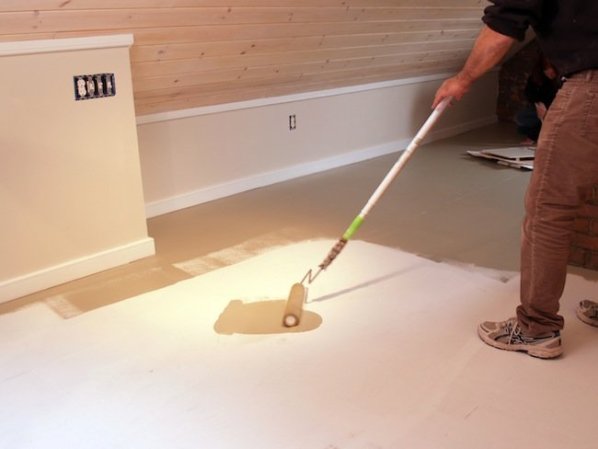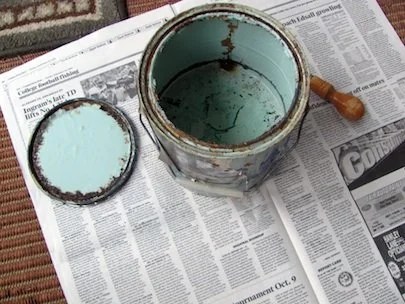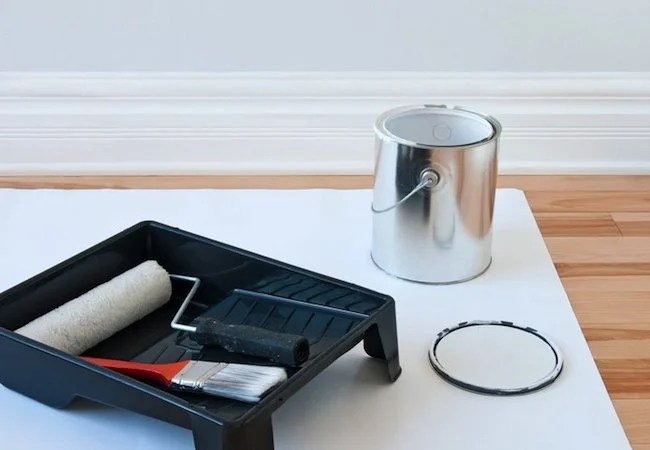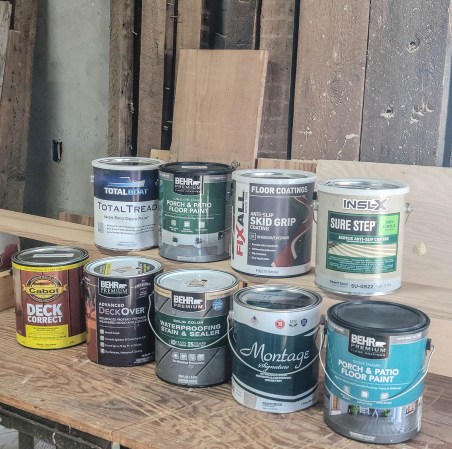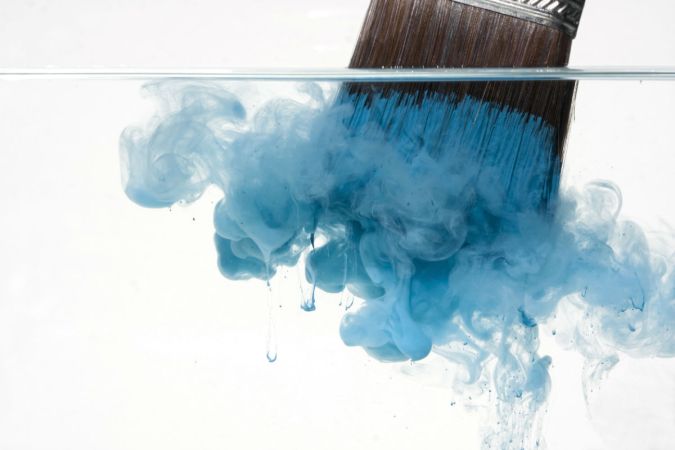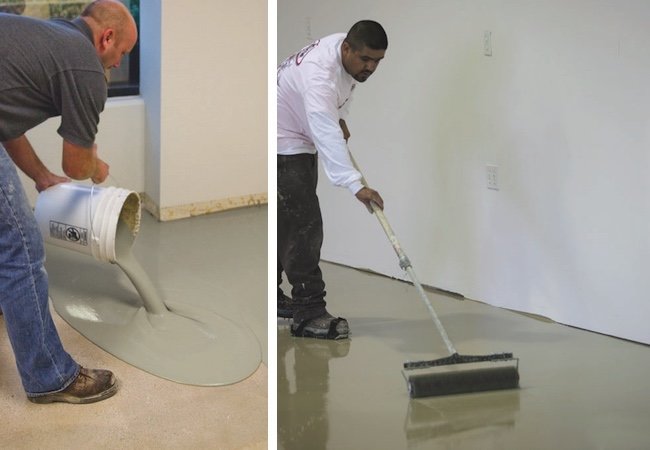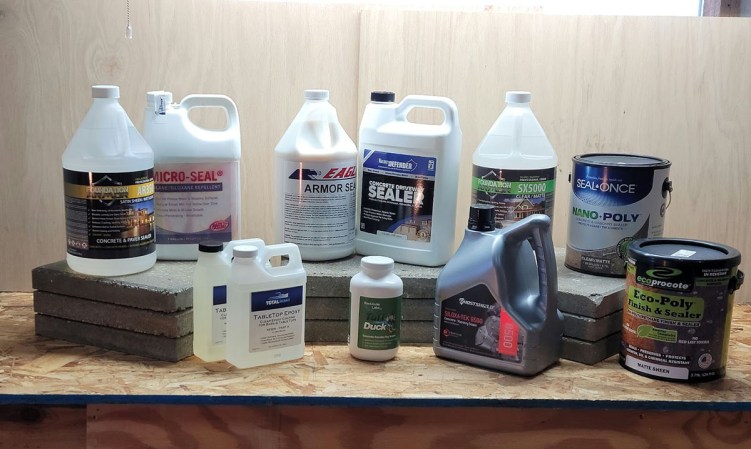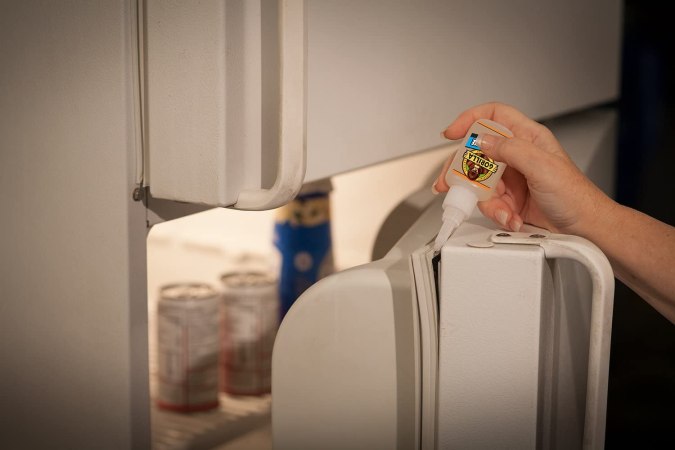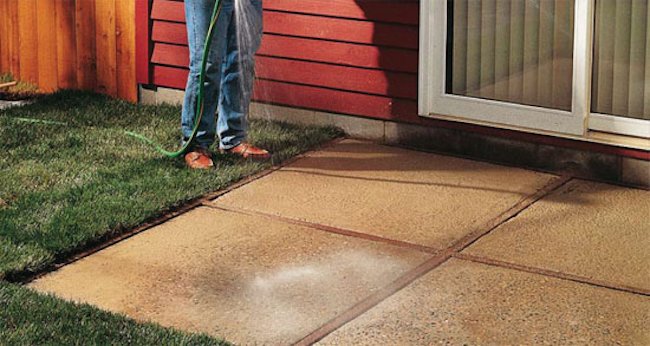We may earn revenue from the products available on this page and participate in affiliate programs. Learn More ›
You lavish attention on the bedroom and living room, bathroom and kitchen, but what about the unsung hero of many smoothly functioning households, the garage? If you’ve always been underwhelmed by the bland gray of the concrete slab, there’s a great way to give it a literally lustrous new look: epoxy paint. No, regular paint isn’t a terrible idea, particularly if you rarely set foot in the garage. But if yours tends to get busy, either with foot traffic or comings and goings of at least one car, opt for epoxy paint. This stuff is tough and resistant to grease, oil, various chemicals and all manner of scuffs—in other words, the litany of challenges that would ruin a regular paint job. Plus, epoxy paint boasts a distinctive, gleaming appearance. Best of all, it’s easy to apply. Here’s how it’s done.
First things first: Check the weather report. More important than the air temperature, however, is the temperature of the concrete you are painting. Its surface should be at least 55 degrees Fahrenheit. Assuming conditions are prime, proceed to strip off any old paint that exists on the surface, and remove any oil or grease stains that would compromise the epoxy finish. For those stubborn stains, I recommend using the forceful combination of a degreaser and scrub brush.
Once you’ve gotten the slab pretty clean, wet down the whole floor with a mixture of water and degreaser. Follow up with an electric floor scrubber, continuing until you see a healthy head of suds. That’s a sign that you’ve really gotten somewhere. Now, plug in a wet/dry vac and suck up as much of the moisture as possible. (Don’t empty the vacuum bucket, which now contains degreaser, in your yard. Check the product label and heed its advice for proper disposal.)
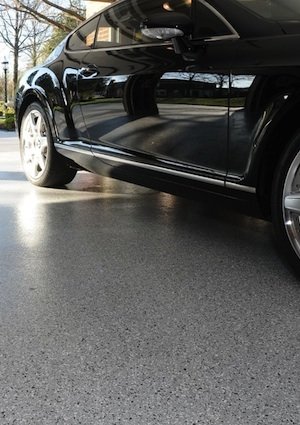
Epoxy adheres best to an etched concrete surface. That being the case, you must take the time to prepare the slab before you can begin applying the coating. Cover the floor with a 10-to-1 mixture of water and muriatic acid, then go over it a second time with the electric scrubber. Caution: Muriatic acid is dangerous. Closely follow the printed instructions, and be sure to wear all suitable protective gear.
Next, hose off the floor thoroughly. Allow the concrete to dry overnight. In the morning, it should have a slightly rough surface, with a consistency similar to that of sandpaper. It’s now ready for paint.
Epoxy comes in several varieties, the most common being solvent-based or water-based. Many commercial outfits choose solvent-based epoxies, because they are especially strong. The downside is that their fumes are highly toxic. Water-based epoxies are almost as good and produce no toxic fumes. So in residential use, it’s really best to stick with the latter. But note that if you opt for a solvent-based epoxy, it’s of paramount importance that you wear a respirator when working with the product.
Whether solvent- or water-based, epoxy paint usually requires the mixing of two components—resin and hardener—prior to painting. Mix thoroughly, using an electric drill chucked with a stirring bit. Once the epoxy is ready, you can finally begin to paint the floor, much in the same way you’d paint other surfaces.
Brush paint around the perimeter, then use a roller to cover the rest of the floor, section by section. In the interest of tidiness, keep a collection of rags handy. Use them to remove any misapplied paint. Epoxy thinner must be used with a solvent-based product; otherwise, water does a fine job. Let the first coat dry for at least a day before applying the second, final coat. You’re very close to finished now.
To dry out completely and cure, epoxy needs to sit undisturbed for as long as a week (confirm this with the printed instructions on the container of your chosen epoxy paint product). Only after the recommended amount of time has elapsed should you haul your stuff back into the garage. Yes, that’s inconvenient. But when you pull in the car, you’ll love how it looks parked—like a model in a showroom!

